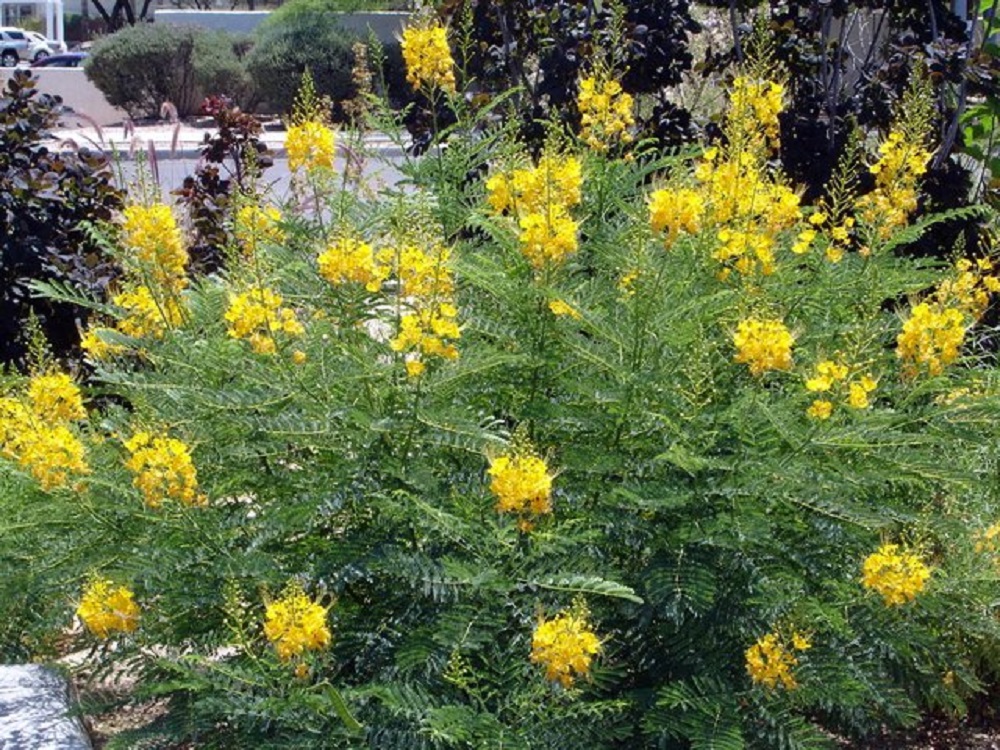Guleturo - Peacock Flower Tree

Caesalpinia pulcherrima
Summary
Scientific Classification
Kingdom: Plantae
Division: Magnoliophyta
Class: Magnoliopsida
Order: Fabales
Family: Fabaceae
Genus: Caesalpinia
Species: C.pulcherrima
Scientific Name: Caesalpinia pulcherrima (L) Sw.
Common Names:
English: Peacock flower, Pride of Barbados, Dwarf Poinciana.
Hindi: Guleturo.
Kannada: Kenjage, Rathna gentige.
Marati: Sankasur.
Description:
- Habit and Habitat: Deciduous or evergreen small tree with a spreading crown usually without prickles. Tropical dry forests to moist forests.
- Distribution: Native to tropics and subtropics of Americas. Could be native to West Indies.
- Morphology:
Leaf: Bipinnately compound, stipulate, leaflet 8 to 12 pairs.
Infloroscence: big, erect racemes.
Flower: Showy, red or yellow complete bisexual pentamerous.Calyx petaloid, deeply cleft. Corolla petals unequal, clawd, yellow or red, imbricate.
Androceium: Stamens 10 free, filaments long, petaloid.
Gynoceium: Ovary flat, monocarpellary, ovules few, style, filiform, stigma terminal.
Fruit: Pods oblong, flat.
Seeds: Obovate – oblong, smooth, glabrous.
Flowering and Fruiting time: more or less throughout the year. - Propagation: by seeds, soft wood cuttings.
- Importance:
A multi purpose plant, it is often gathered from the wild for local food and medicinal value. It is widely grown in tropics as an ornamental and as hedge been valued especially for its encreadible blossoms. The leaves, flowers and seeds are used in the treatment of stomach, urinary bladder and kidney problems. Flowers are used in the treatment of bronchitis and asthama. - Location: Botanical Garden, Main entrance garden.
 Trees of GSS Project supported by Makerspace Belgaum Website concept and designe by
Trees of GSS Project supported by Makerspace Belgaum Website concept and designe by